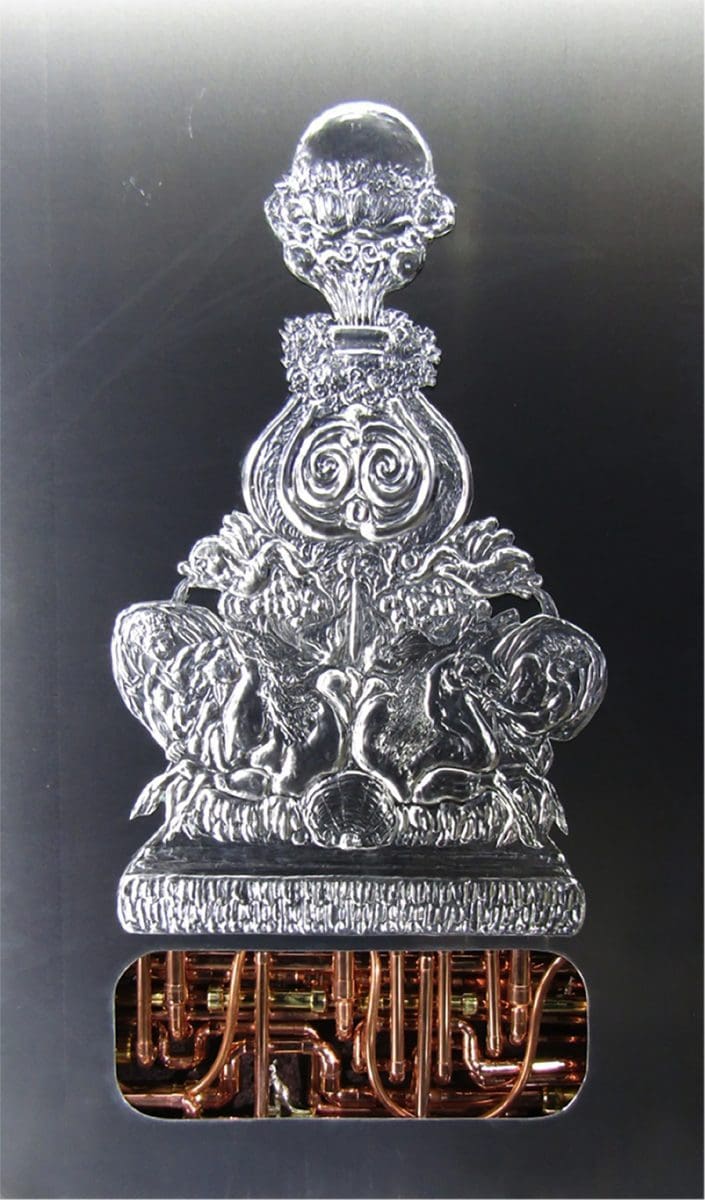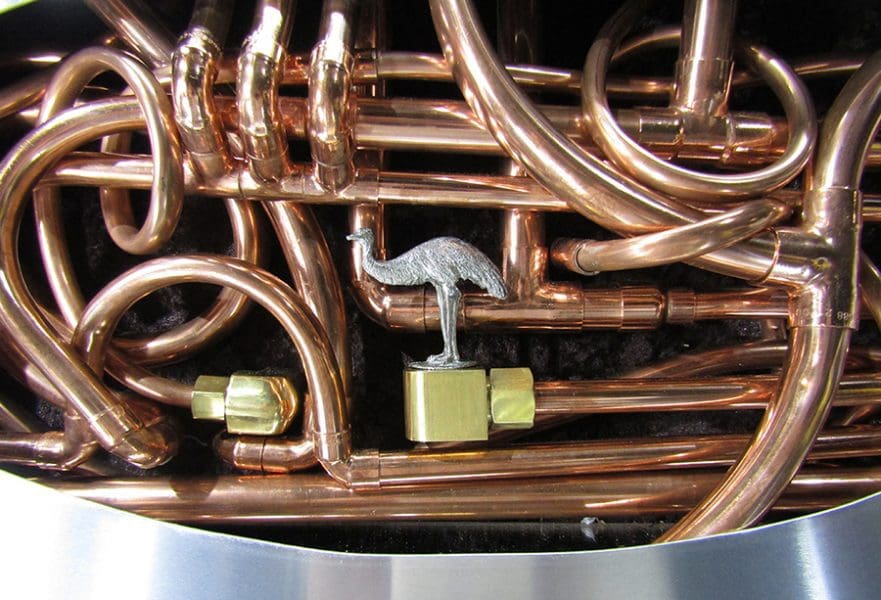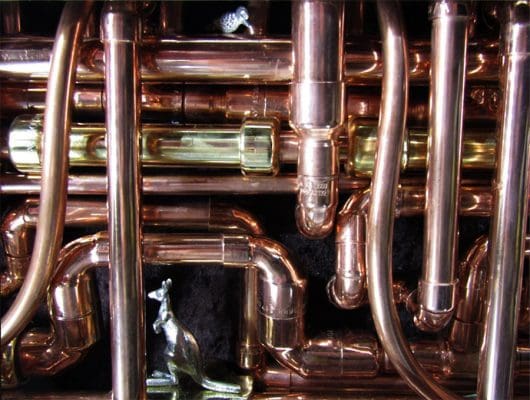
Making Space at the Table
NAP Contemporary’s group show, The Elephant Table, platforms six artists and voices—creating chaos, connection and conversation.




As Brisbane gasps through a humid and hot November storm season, an exhibition about water is appealing. Ross Woodrow takes on significant traditions in his solo exhibition Waterworks, with an array of objects that he says “are like nothing you have ever seen.” Issues not usually associated with art, including the Antipodean contribution to aesthetics, culture and plumbing, are examined with a wry commentary.
On his journey towards the making of his Waterworks, Woodrow has unpacked the European history of the fountain including Marcel Duchamp’s urinal (Fountain, 1917) and etchings of fountains (never built follies) by Jean Le Pautre (1618-1682). Woodrow’s works are sculptural, using visible piping, metal, and “no art materials.”
He goes so far as to suggest that he is keen for his constructions to stand up with a plumbing audience. The main focus is what lies underneath.

As Woodrow explains, “I particularly sought to use the parallel complex concepts of the fountain as a working wonder, where the viewer suspends the knowledge of the hidden piping, pumps and pressure that makes it all happen, with the case of our own bodily ‘waterworks’.”
Woodrow’s fountains are inspired by Le Pautre’s etchings and he renders these designs in aluminium embossing with convex and concave surfaces. These sit on top of complex arrangements of copper pipes, which themselves have small Australiana follies sitting among them: an emu, kangaroo, an Aboriginal figure. As Woodrow says, “The Antipodean associations of Australia with the European fount of civilisation and the simultaneous imperial exploitation of the colony’s resources and disregard of its inhabitants makes for an irresistible emphasis on the underworld.”
As a senior artist who has taught and made art for decades, Woodrow is no stranger to change. A photorealist painter in the 1970s, he turned to the fetishistic task of painting without a sign of the hand in the 1980s, using spray paint. For this exhibition he has thought through many media before making his choice; they are his most ambitious works to date. The twists and turns of his Waterworks are lively and they extend the fountain and its histories in a distinctly individual manner.
Ross Woodrow: Waterworks
Bosz Gallery
15 November – 3 December